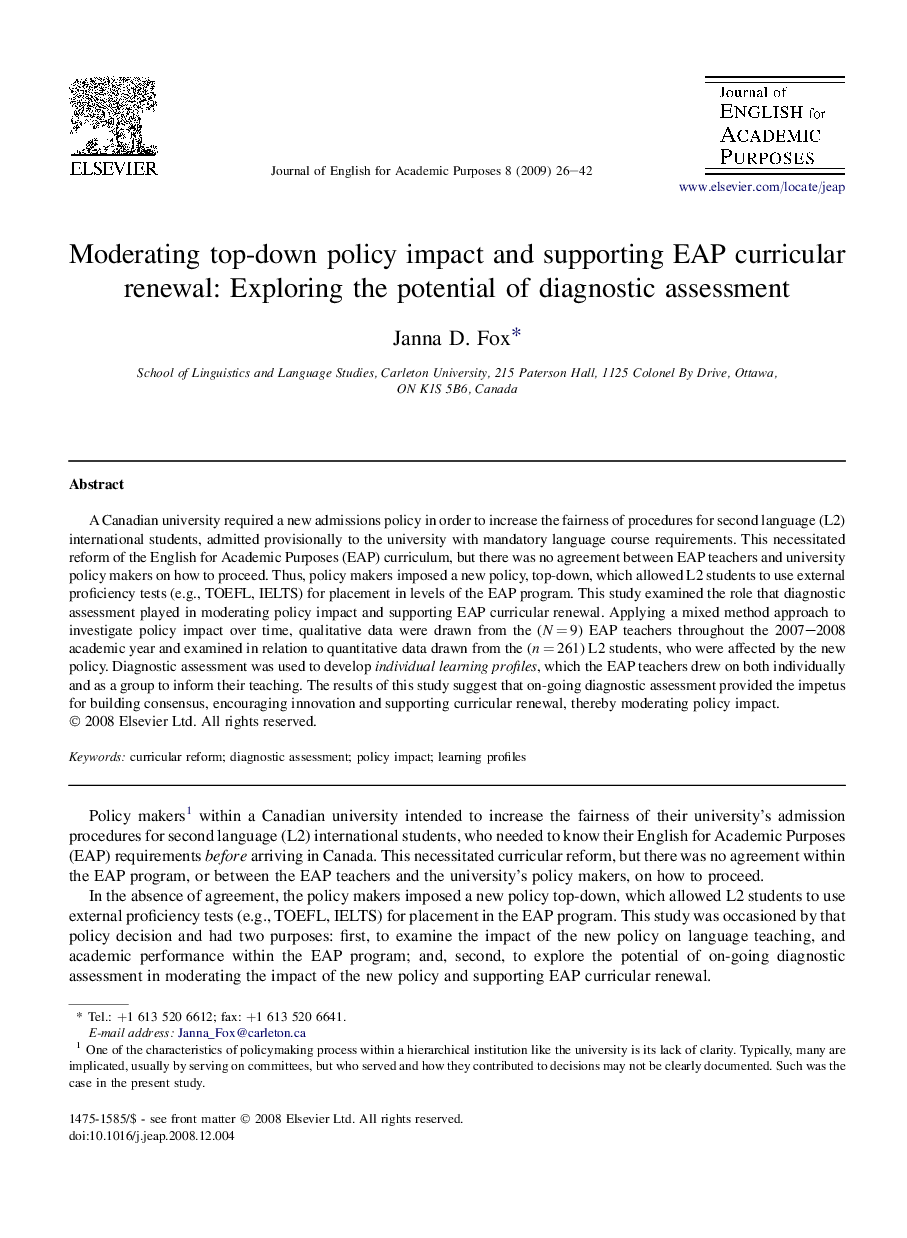| Article ID | Journal | Published Year | Pages | File Type |
|---|---|---|---|---|
| 360543 | Journal of English for Academic Purposes | 2009 | 17 Pages |
A Canadian university required a new admissions policy in order to increase the fairness of procedures for second language (L2) international students, admitted provisionally to the university with mandatory language course requirements. This necessitated reform of the English for Academic Purposes (EAP) curriculum, but there was no agreement between EAP teachers and university policy makers on how to proceed. Thus, policy makers imposed a new policy, top-down, which allowed L2 students to use external proficiency tests (e.g., TOEFL, IELTS) for placement in levels of the EAP program. This study examined the role that diagnostic assessment played in moderating policy impact and supporting EAP curricular renewal. Applying a mixed method approach to investigate policy impact over time, qualitative data were drawn from the (N = 9) EAP teachers throughout the 2007–2008 academic year and examined in relation to quantitative data drawn from the (n = 261) L2 students, who were affected by the new policy. Diagnostic assessment was used to develop individual learning profiles, which the EAP teachers drew on both individually and as a group to inform their teaching. The results of this study suggest that on-going diagnostic assessment provided the impetus for building consensus, encouraging innovation and supporting curricular renewal, thereby moderating policy impact.
